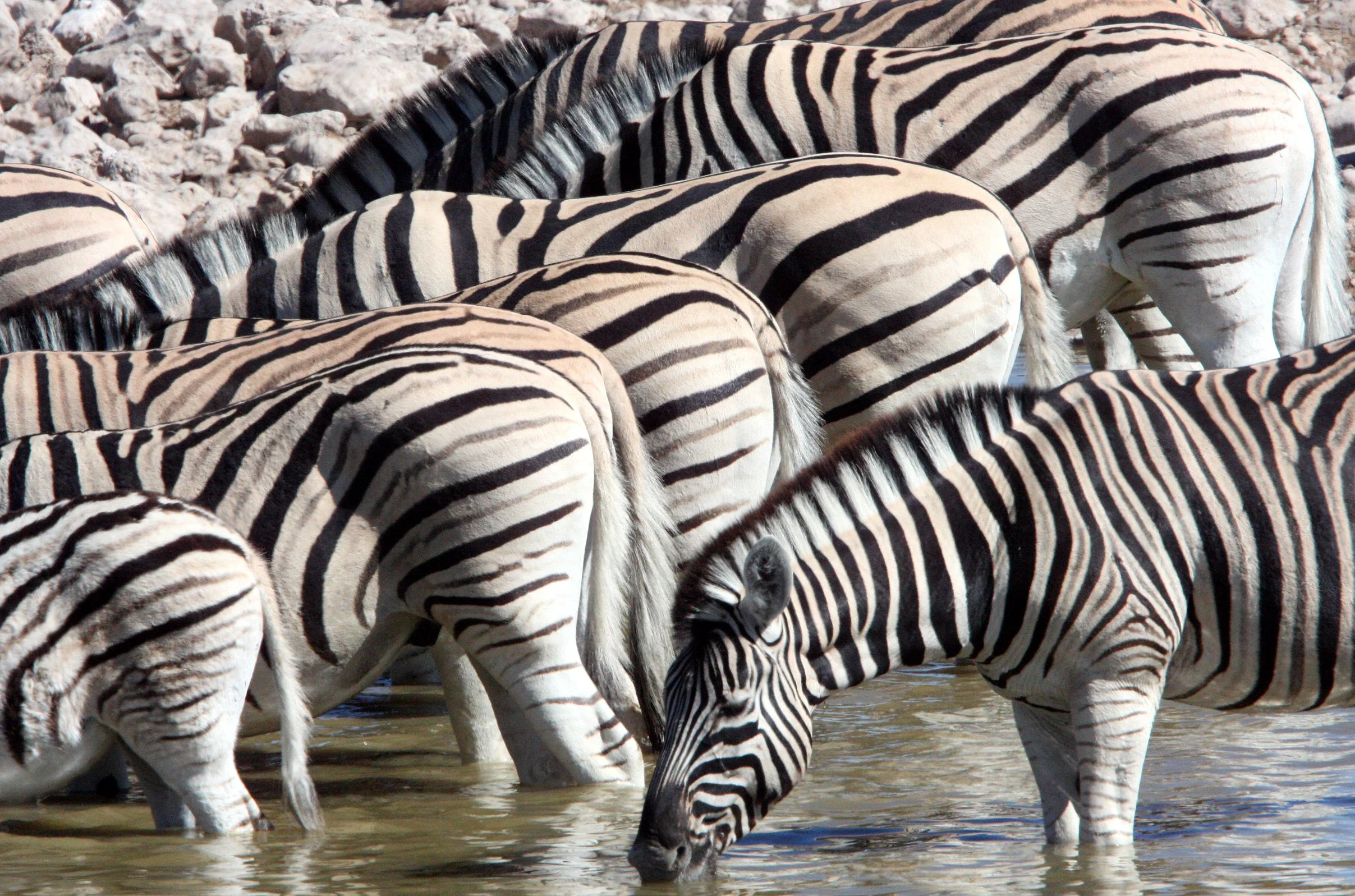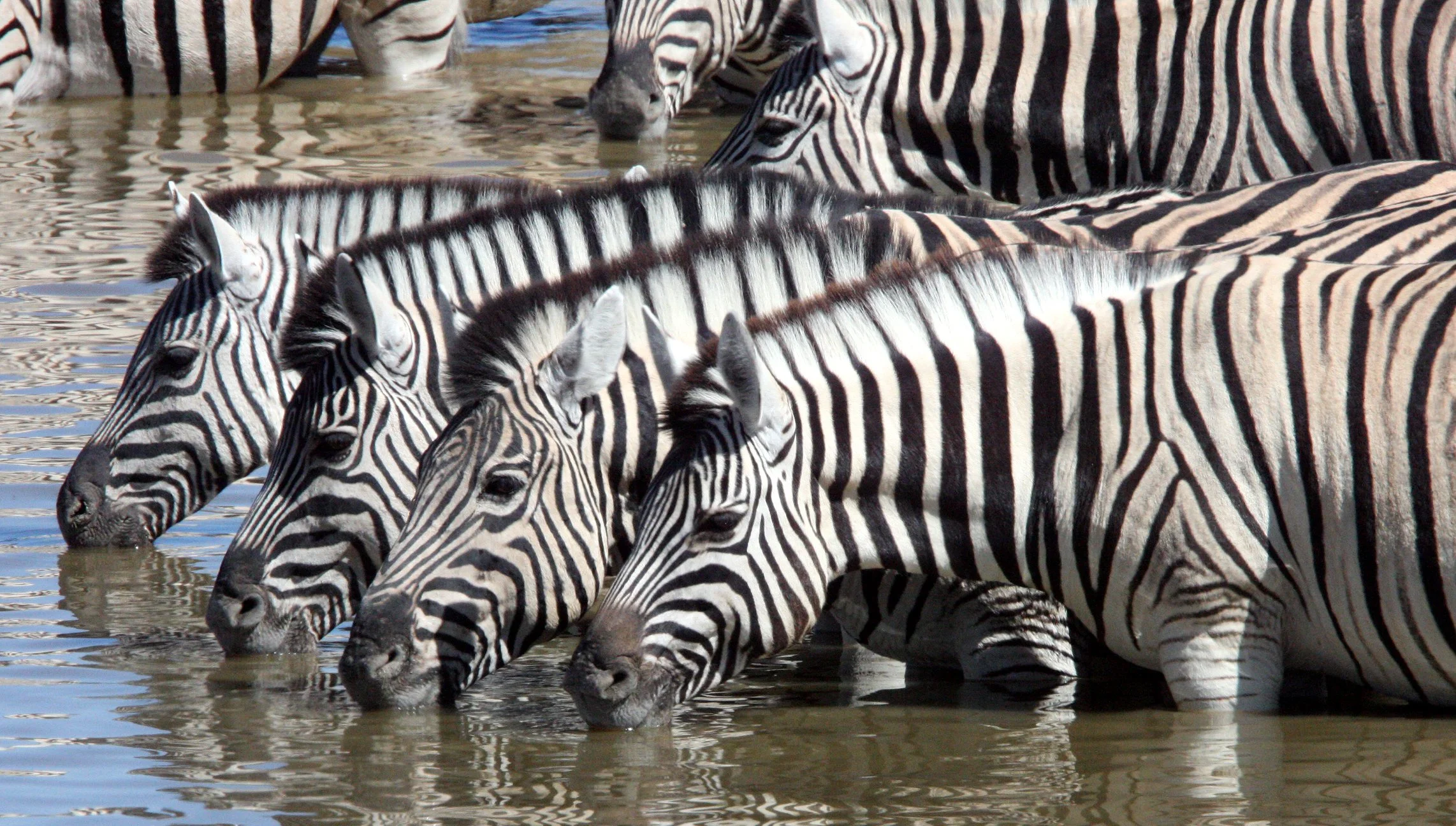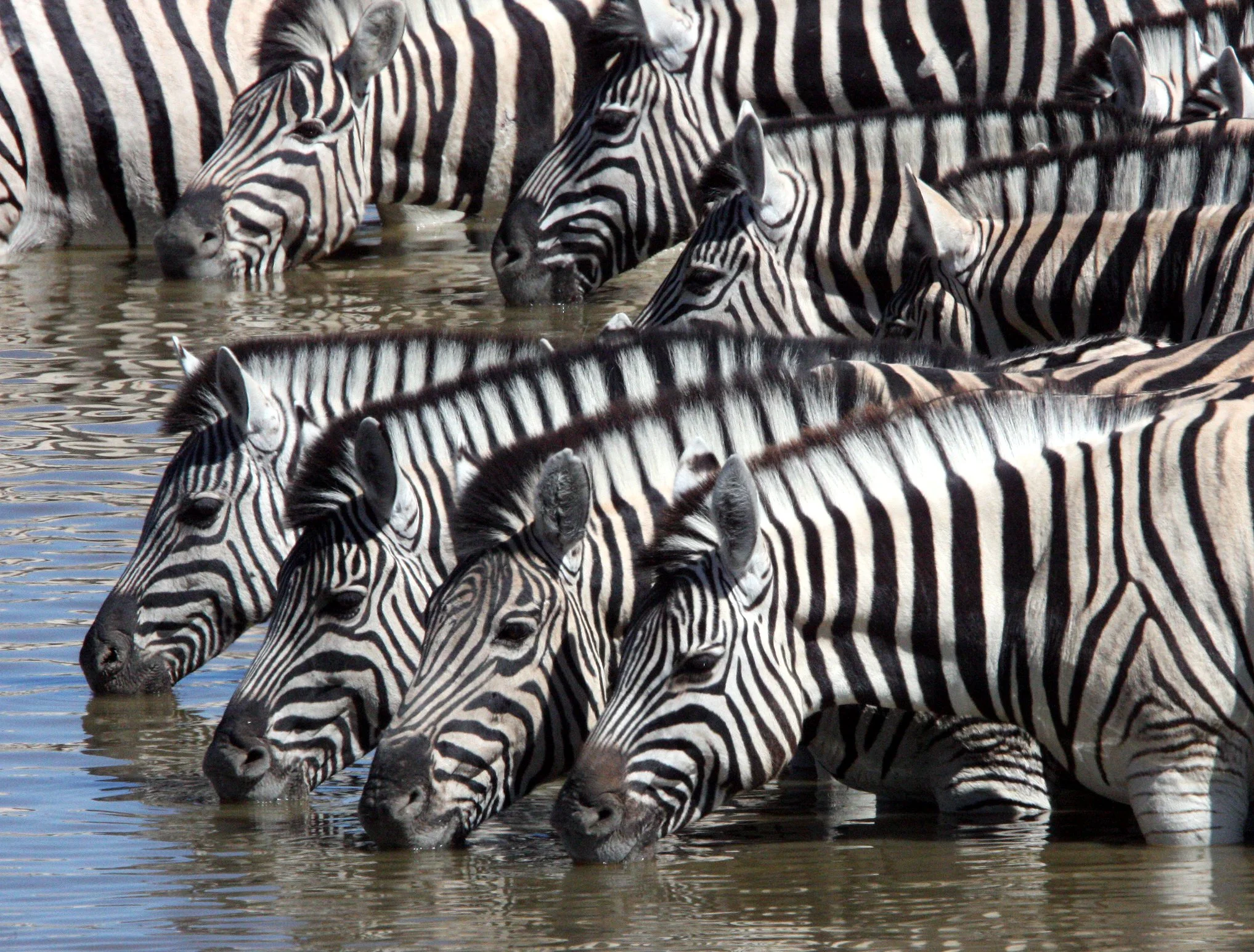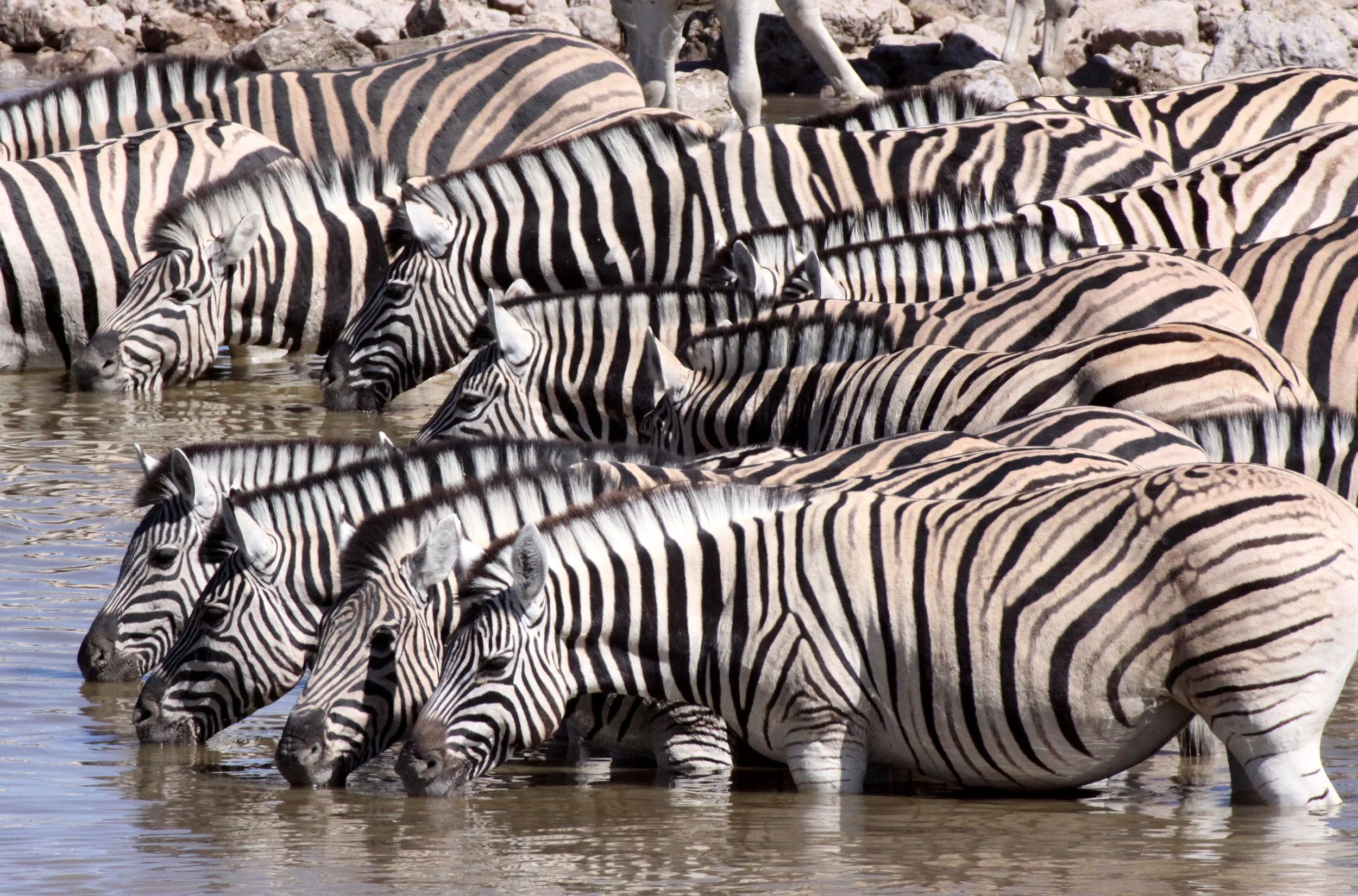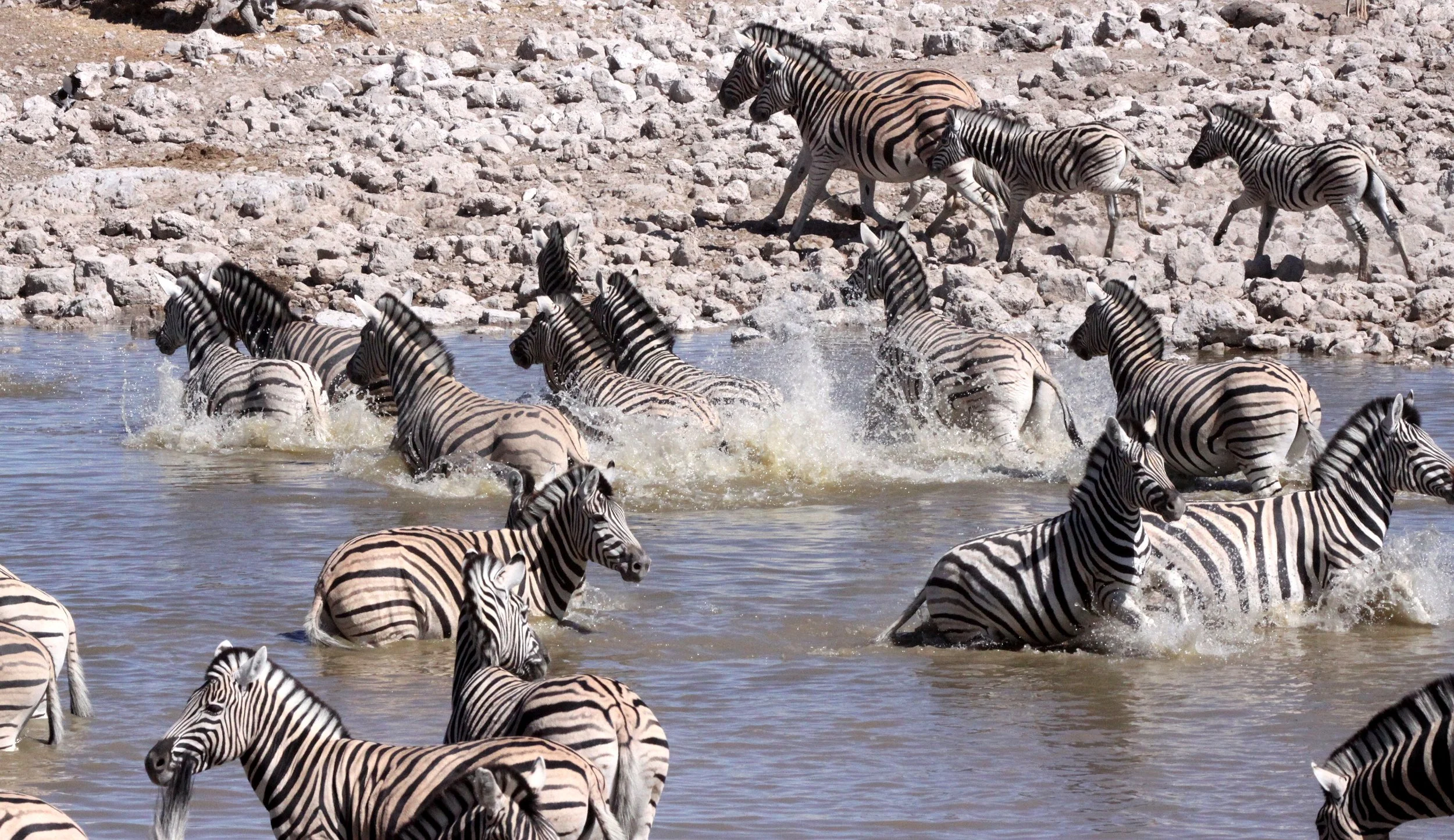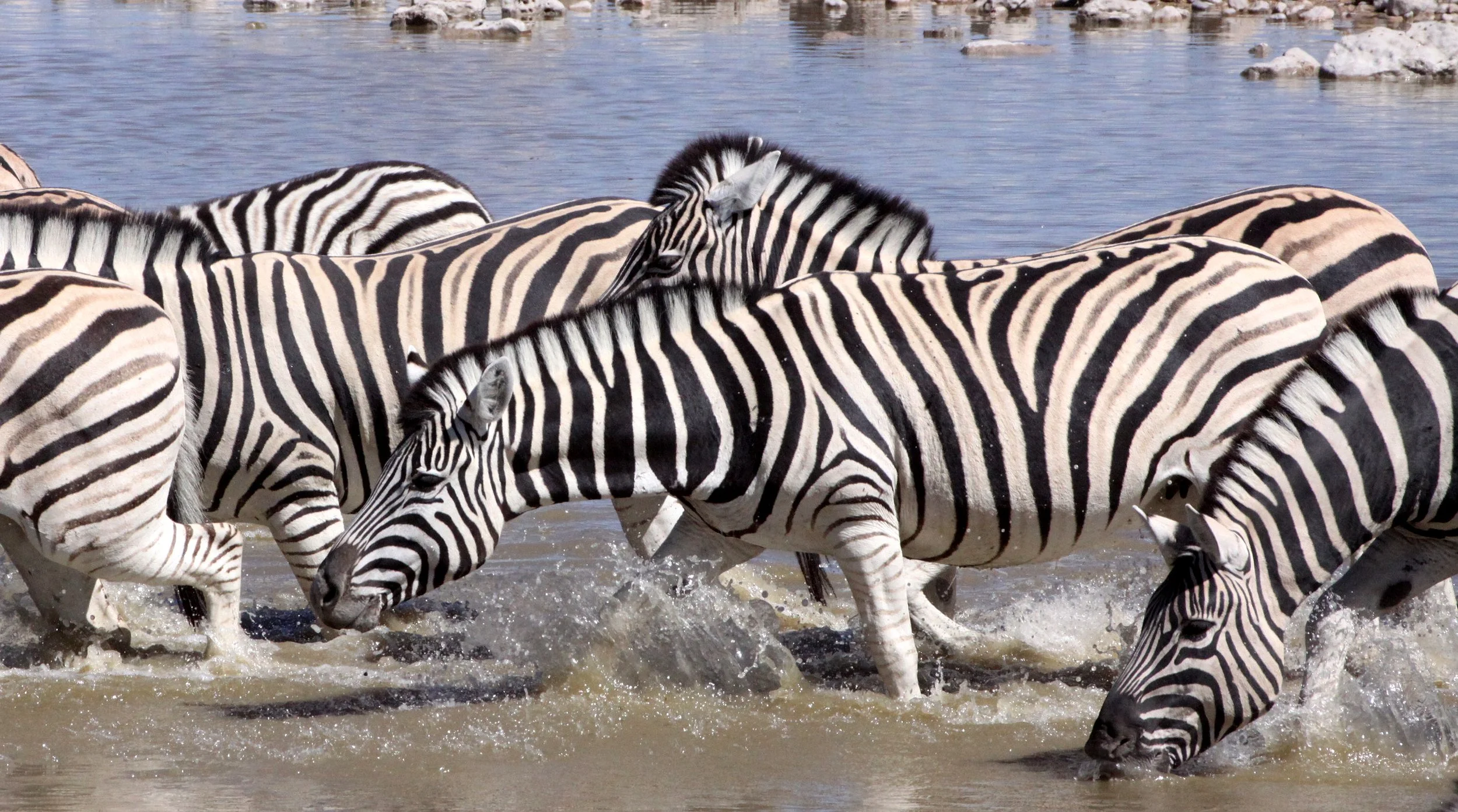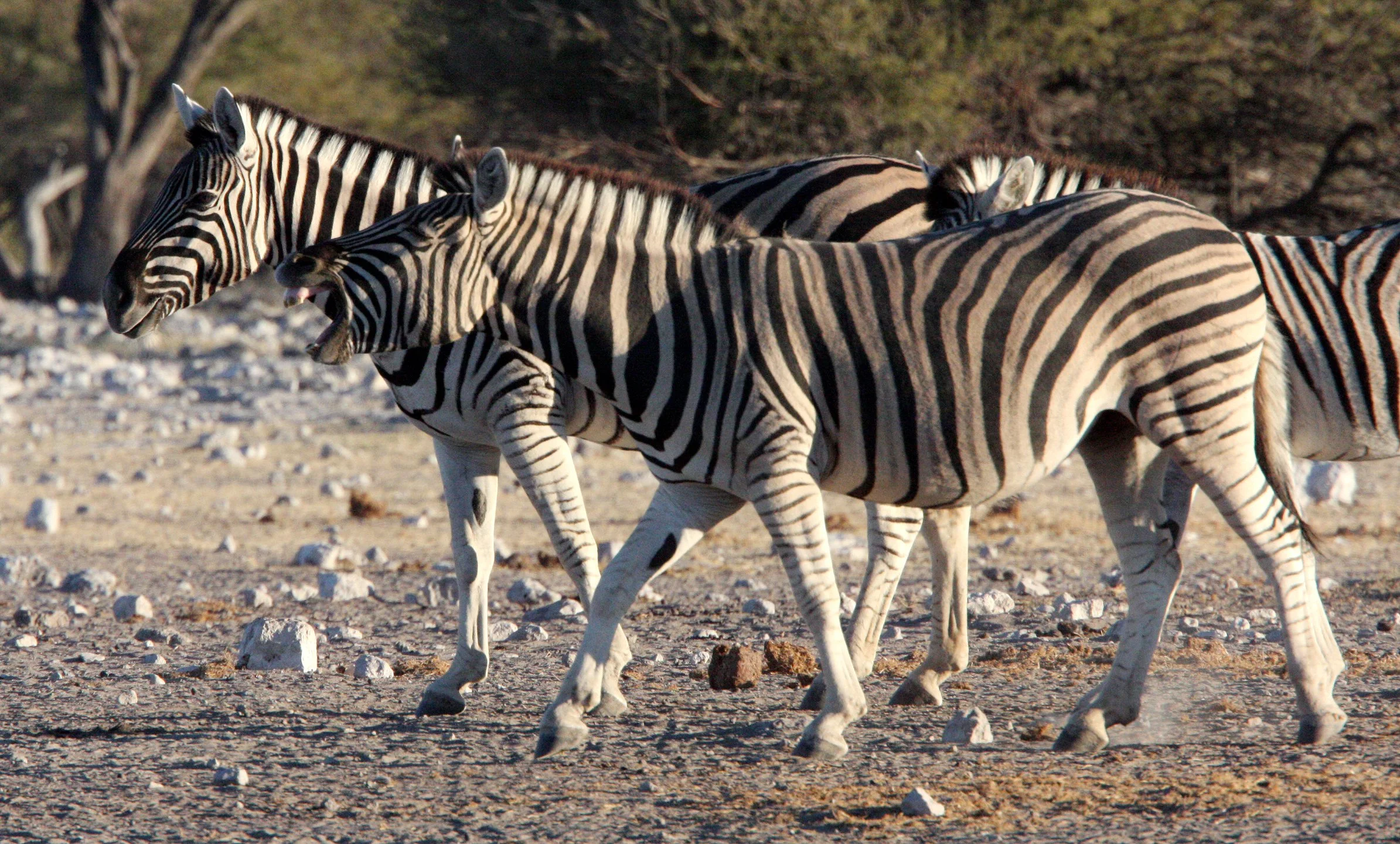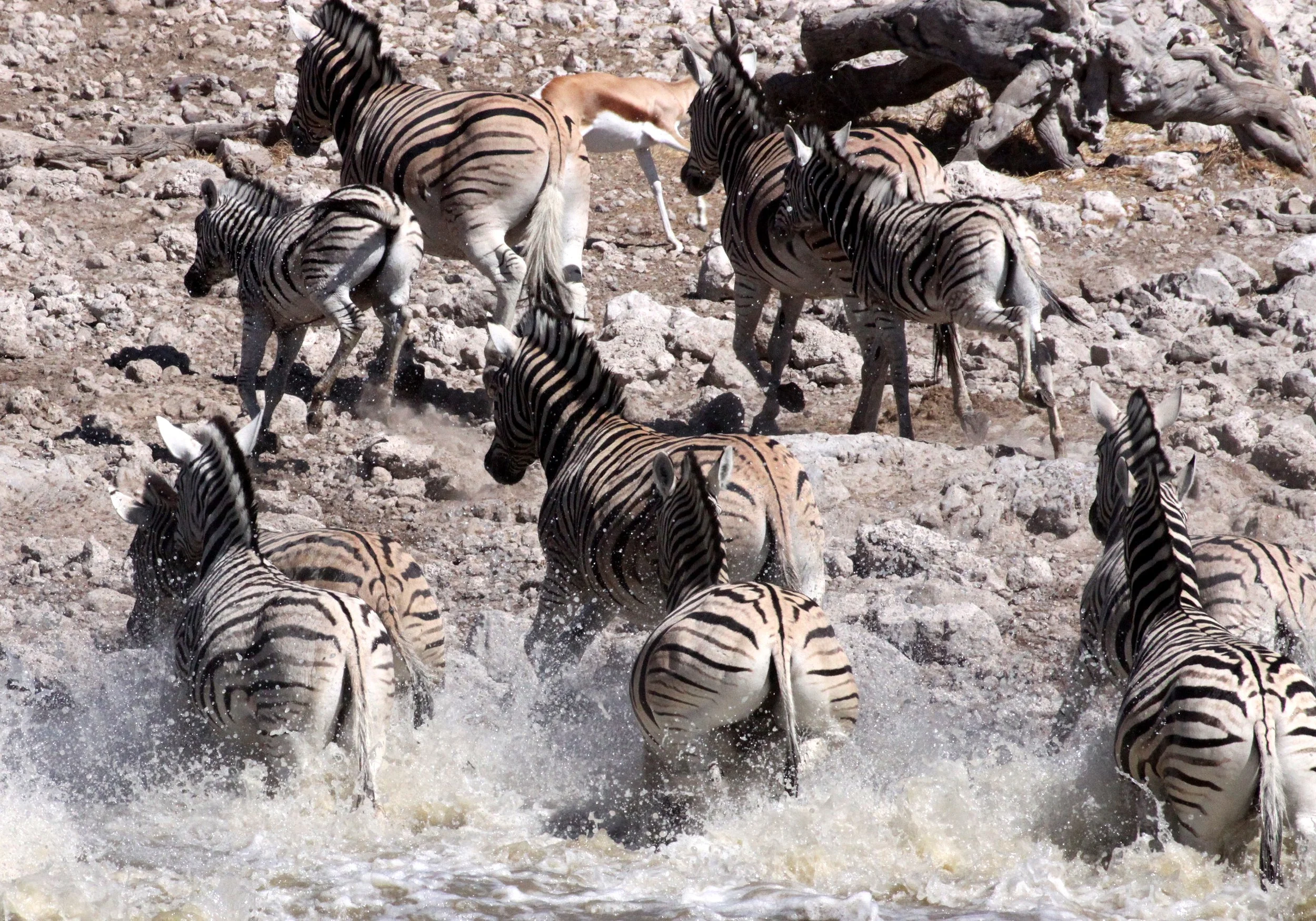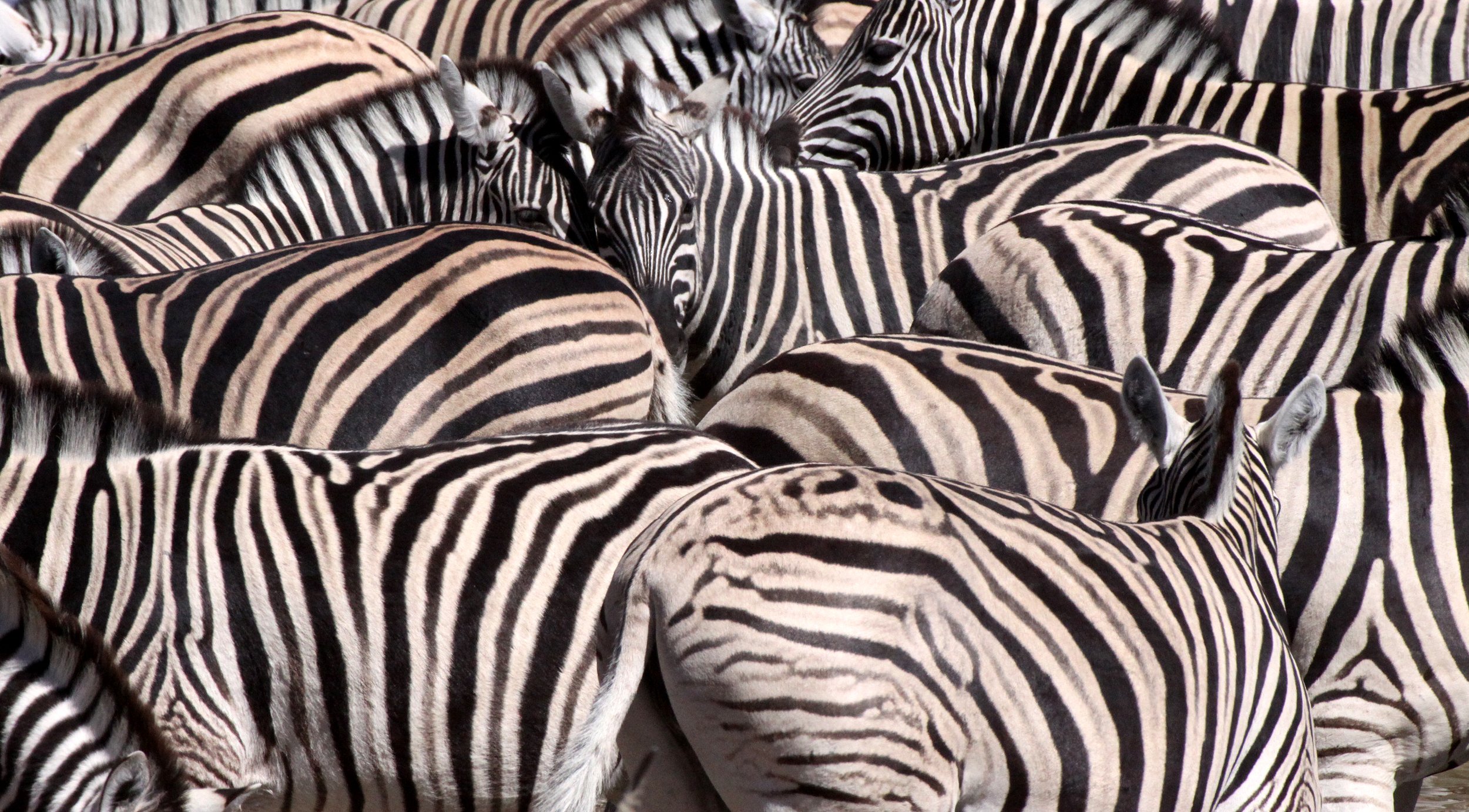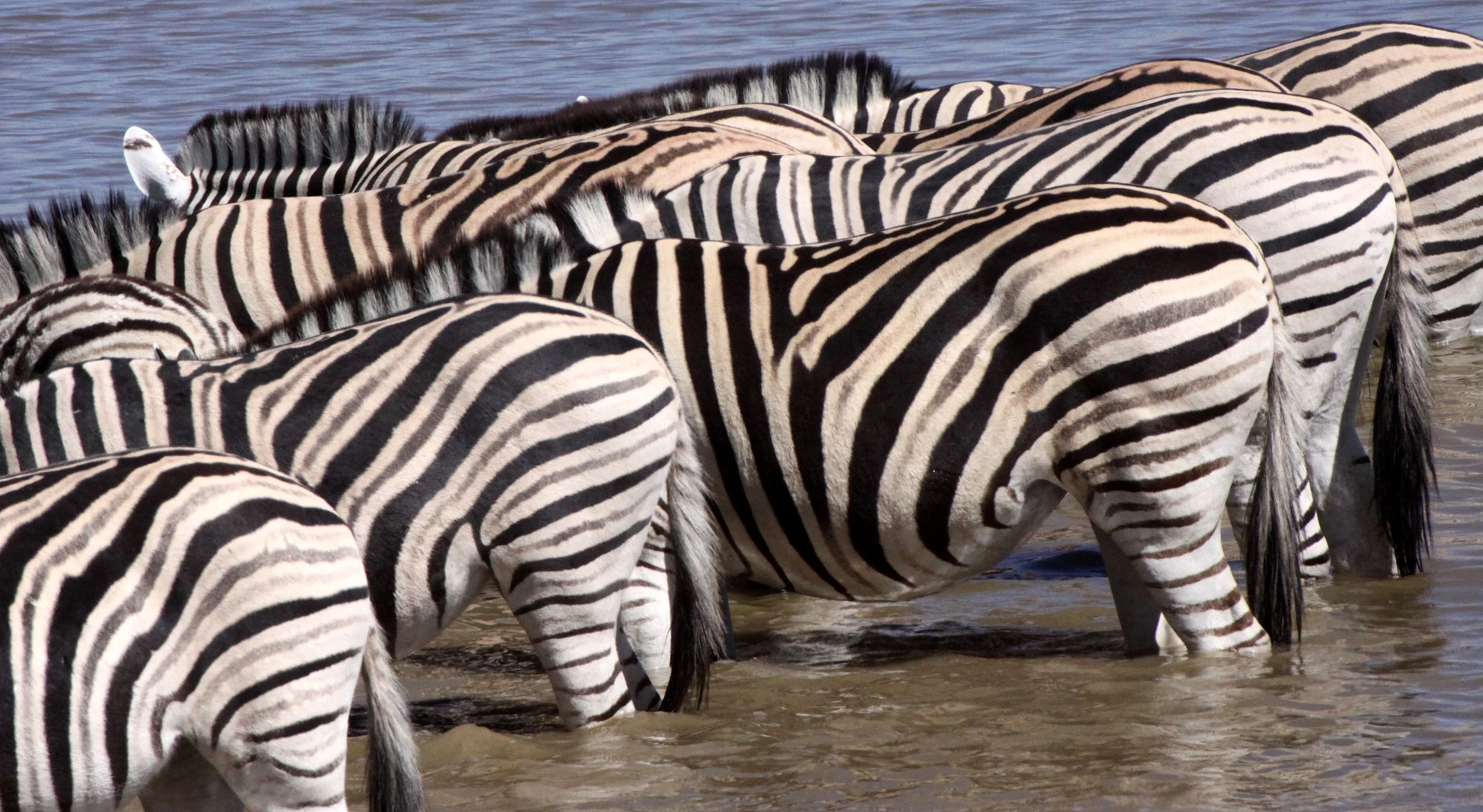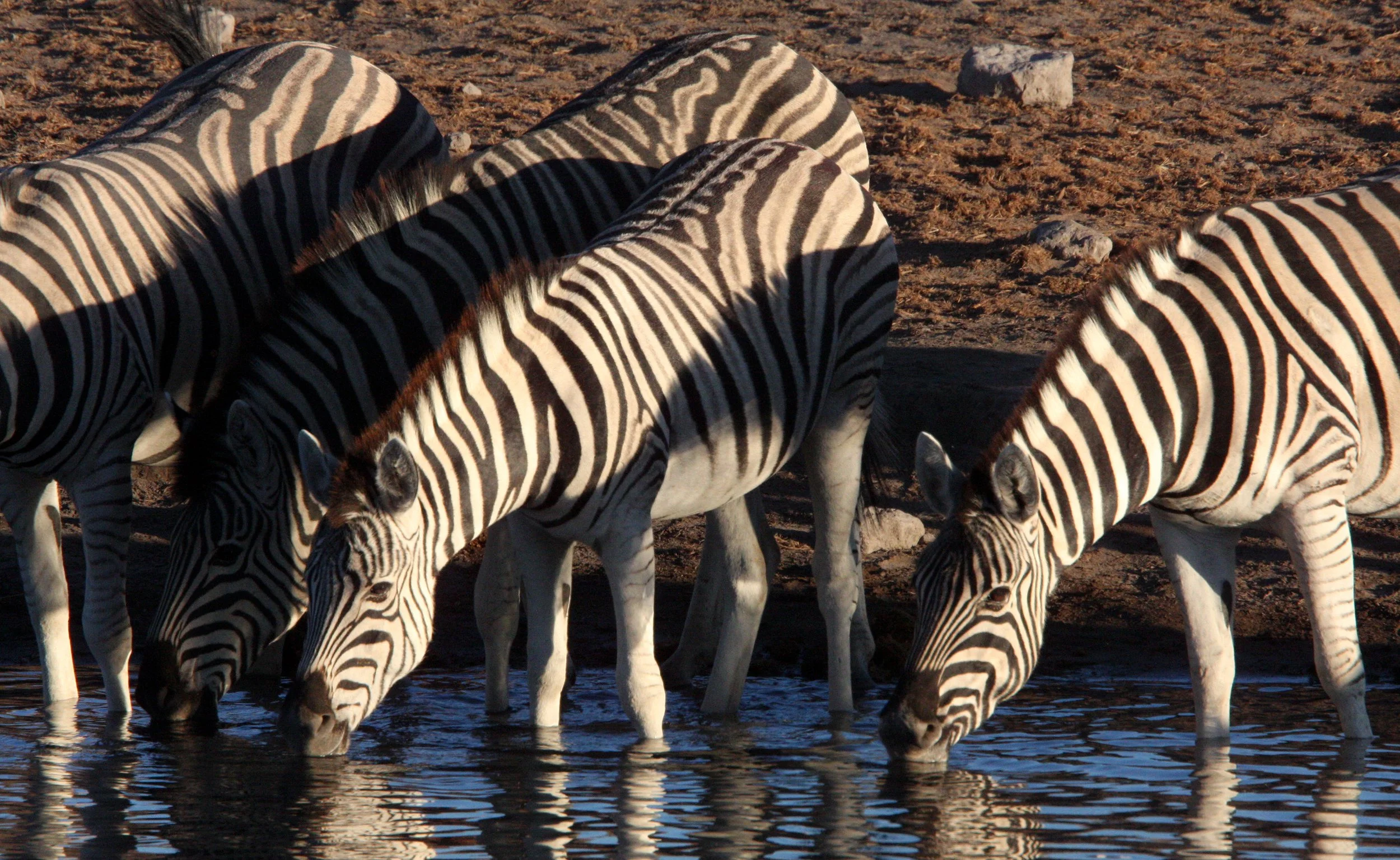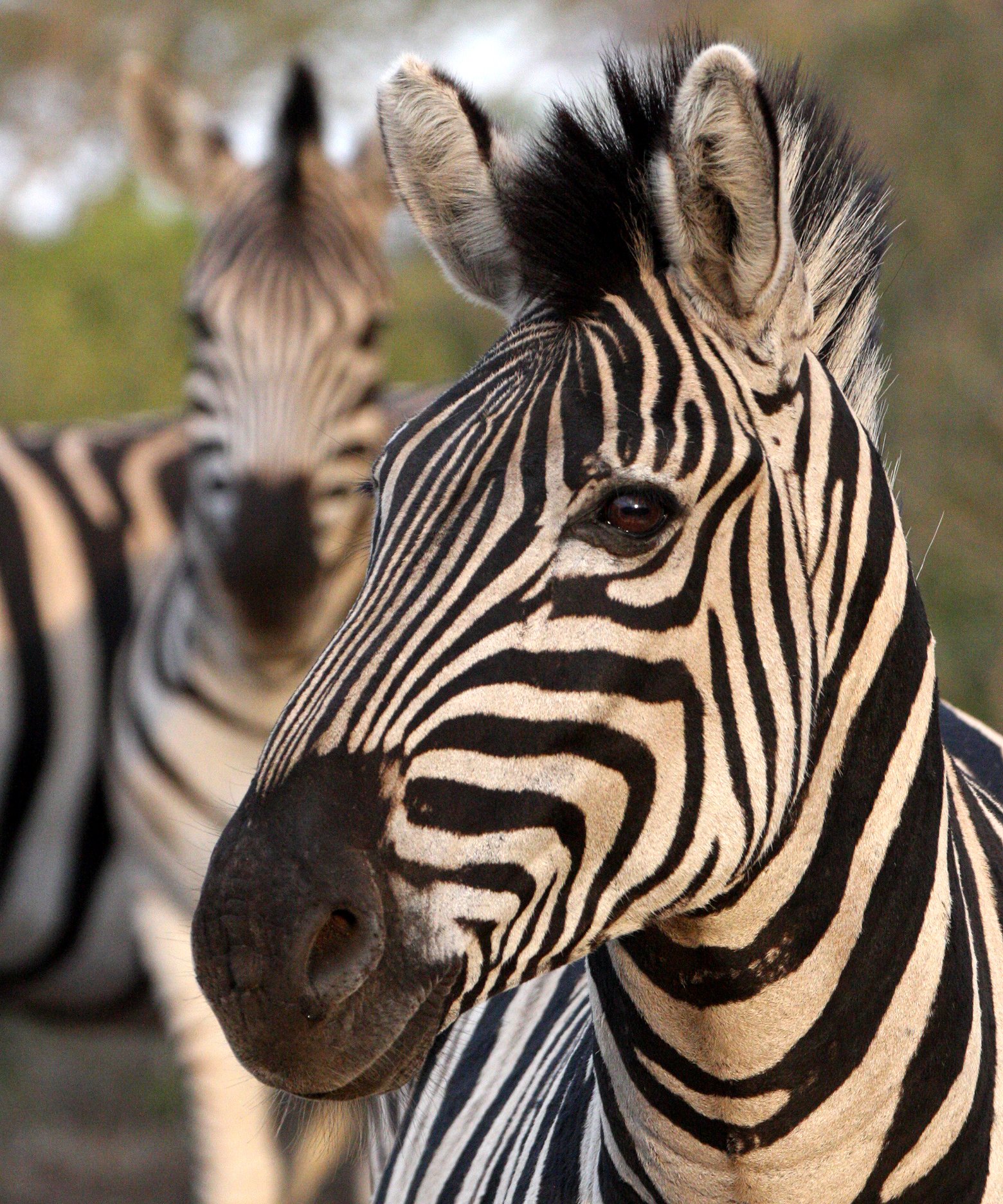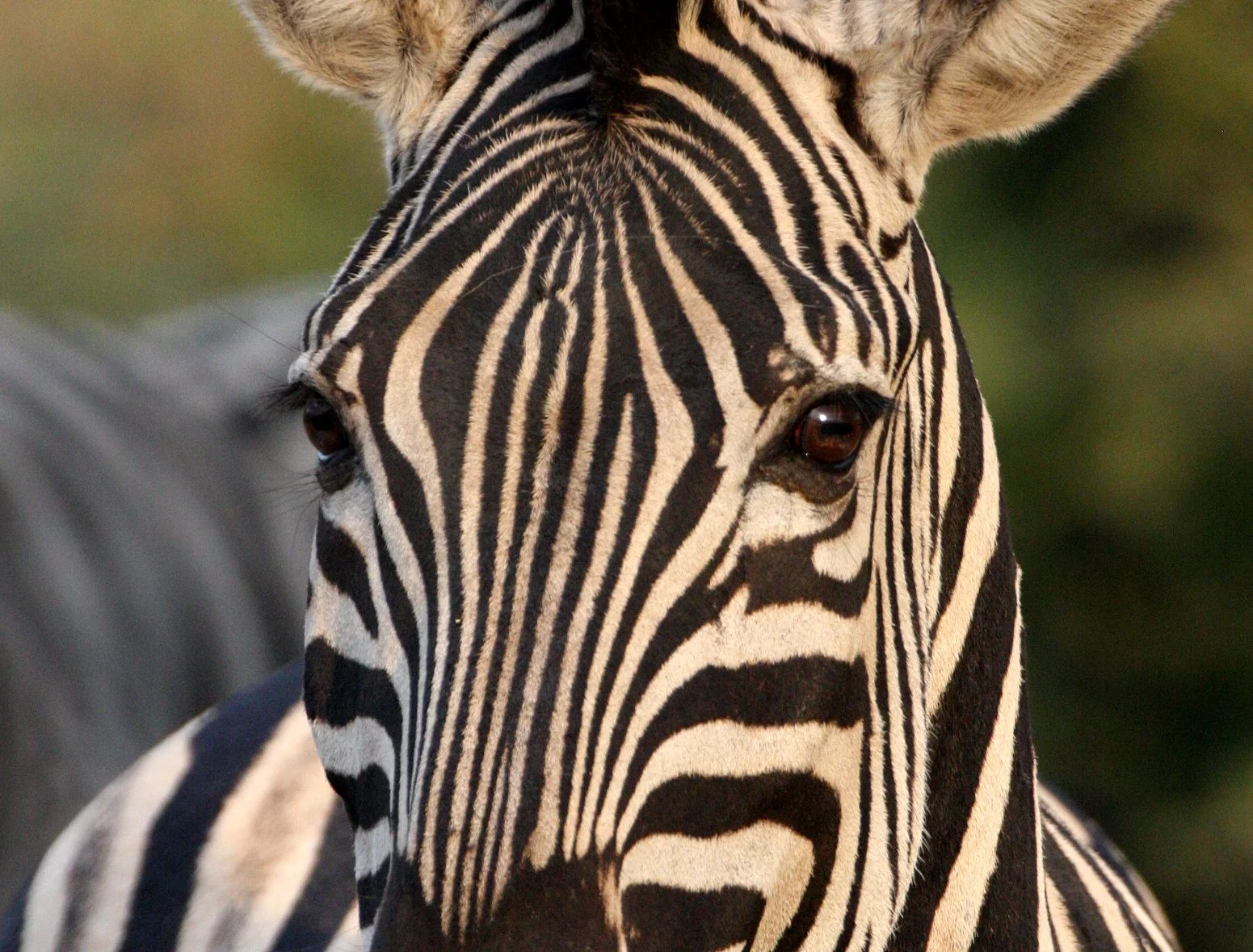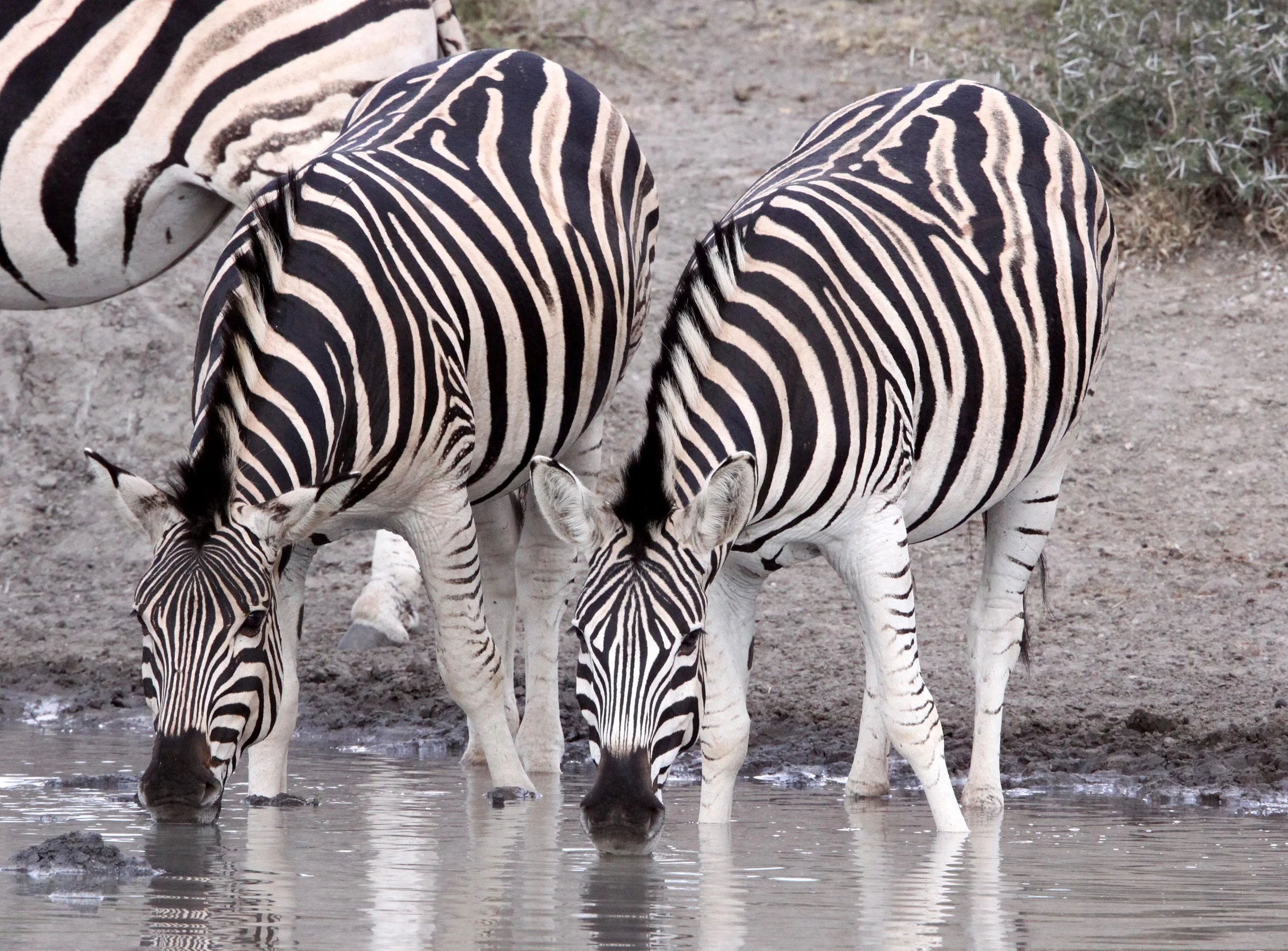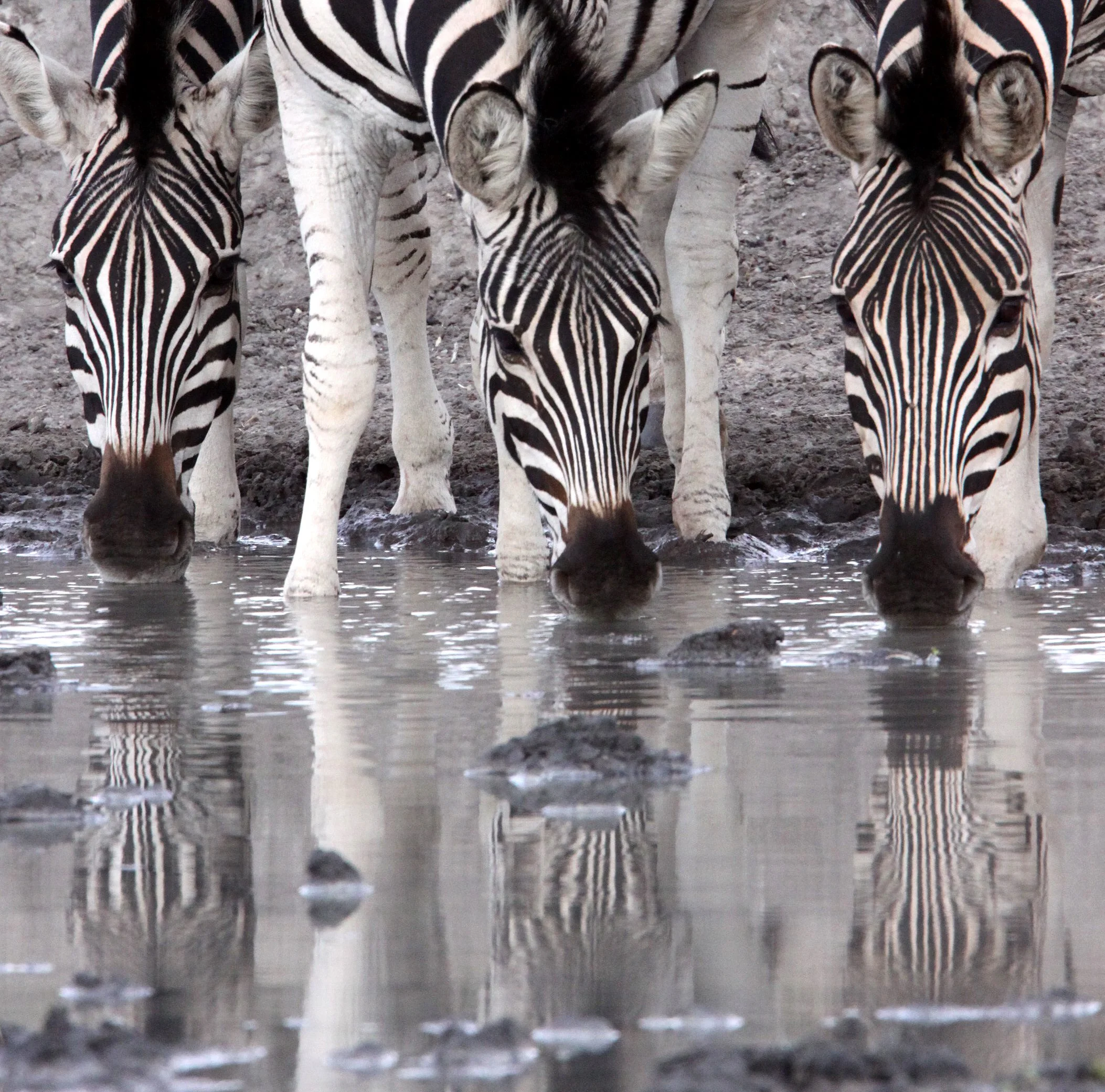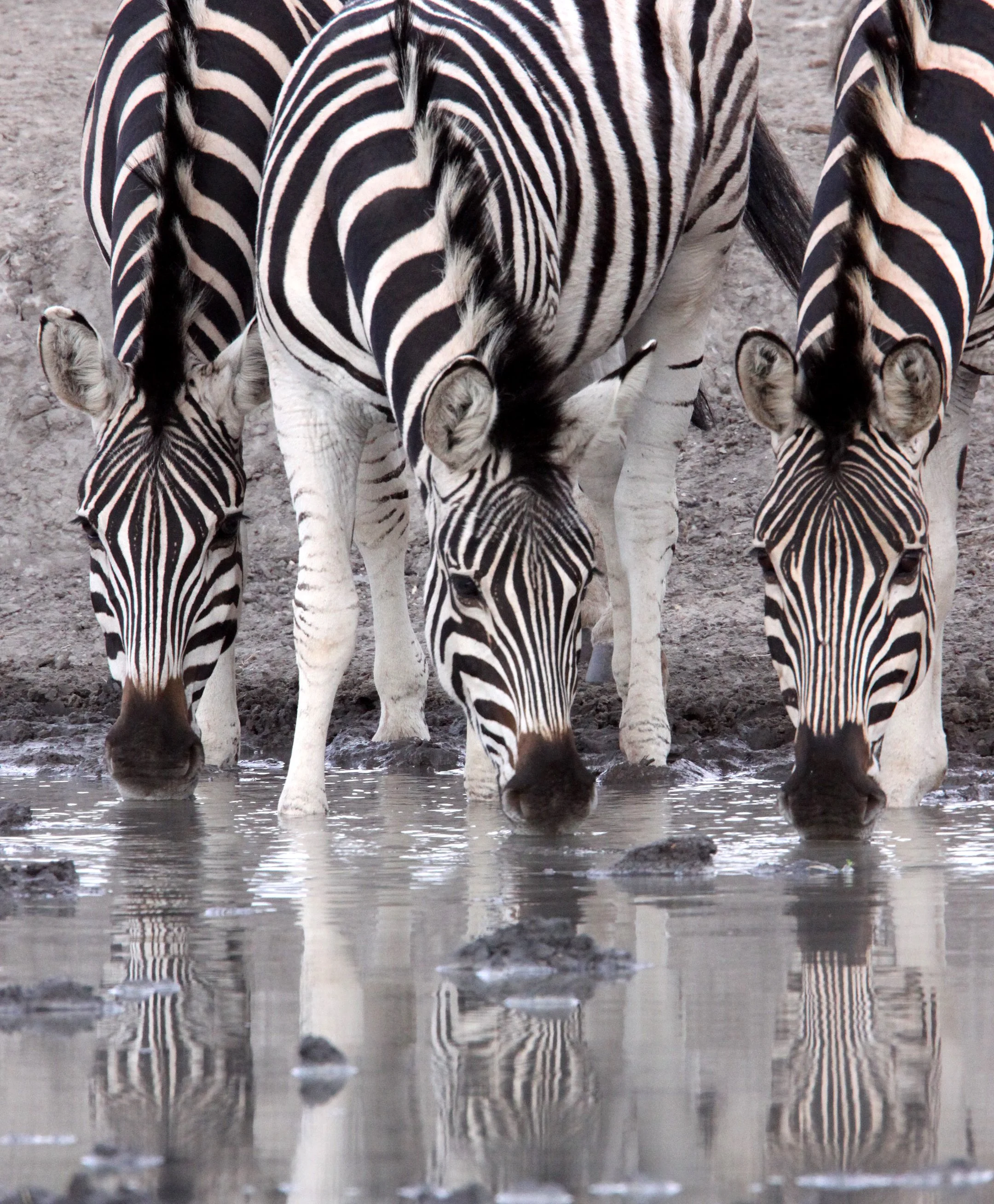
Burchell’s Zebra
Burchell's zebra (Equus quagga burchellii) is a southern subspecies of the plains zebra. It is named after the British explorer and naturalist William John Burchell. Common names include bontequagga, Damaraland zebra, and Zululand zebra (Gray, 1824). Burchell's zebra is the only subspecies of zebra which may be legally farmed for human consumption.
Like most plains zebras, females and males are about the same size, standing 1.1 to 1.4 metres (3 ft 7 in to 4 ft 7 in) at the shoulder. They weigh between 230 and 320 kilograms (500 and 700 lb). Year-round reproduction observed in this subspecies in Etosha National Park, Namibia, concludes synchronization of a time budget between males and females, possibly explaining the lack of sexual dimorphism.
Burchell's zebras are described as being striped on the head, the neck, and the flanks, and sparsely down the upper segments of the limbs then fading to white. One or two shadow stripes rest between the bold, broad stripes on the haunch. This main distinguishing characteristic sets the Burchell's zebra apart from the other subspecies. Gray (1824) observed a distinct dorsal line, the tail only bristly at the end, and the body distinctly white. The dorsal line is narrow and becomes gradually broader toward the rear, distinctly margined with white on each side.
Like most plains zebras, Burchell's live in small family groups. These can be either harem or bachelor groups, with harem groups consisting of one stallion and one to six mares and their most recent foals, and bachelor groups containing two to eight unattached stallions. The males in bachelor herds are often the younger or older stallions of the population, as they are most likely not experienced enough or strong enough to defend breeding rights to a group of females from challengers. These small groups often congregate in larger herds around water and food sources, but still maintain their identity as family units while in the population gatherings.
Formerly, the Burchell's zebra range was centered north of the Vaal/Orange river system, extending northwest via southern Botswana to Etosha and the Kaokoveld, and southeast to Eswatini and KwaZulu-Natal. Now extirpated in the middle portion, it survives at the northwestern and southeastern ends of the distribution.
Burchell's zebra migrates the longest distance of any terrestrial animal in Africa, making a round trip of 500 kilometres (300 mi).[8] They migrate from the Chobe River in Namibia to Nxai Pan National Park in Botswana. Their migration follows a straight north–south route almost entirely within the Kavango–Zambezi Transfrontier Conservation Area (KAZA).












